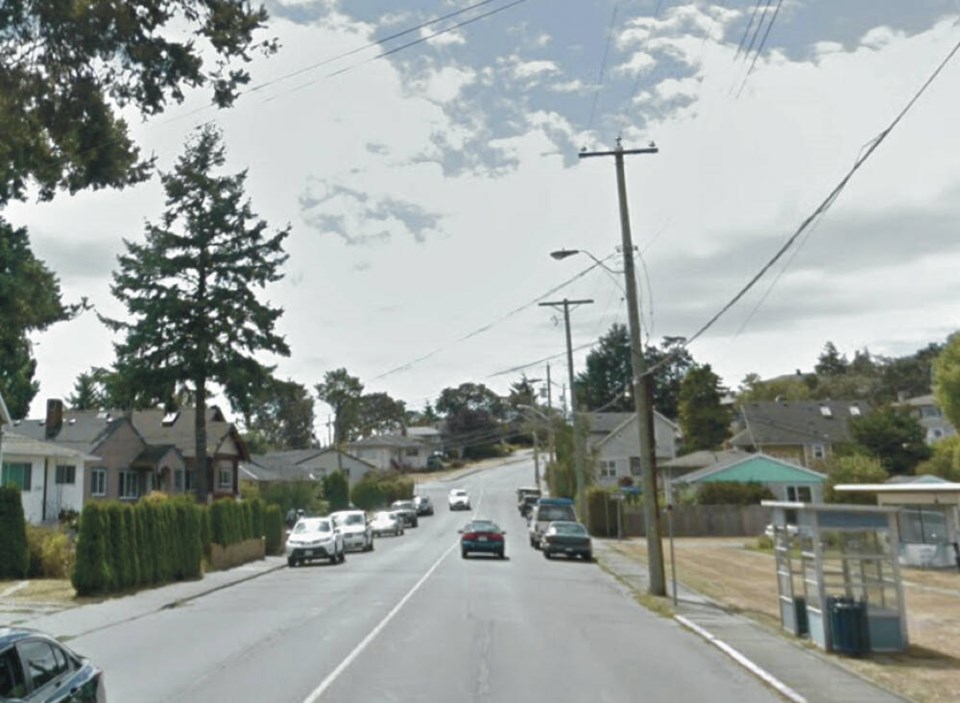Some of Saanich’s busier residential streets could have 30 km/h speed limits by the spring, after council voted to expand its speed-reduction program.
Council unanimously directed its staff Monday night to conduct safe-speed studies on 14 residential streets, with a view to having new speed signs denoting the roads as 30 km/h zones in place by next spring.
Some members of the public told council the reduced speeds were pointless given congestion was already slowing traffic, while others wondered if council had studied the effects of the first phase of speed reduction put in place 10 months ago.
That first phase, which began in April, reduced speed limits on nine traffic corridors with a continuous yellow centre line to 25 km/h to 40 km/h.
Mayor Dean Murdock acknowledged there are likely streets where traffic is rolling at well below posted speed limits during peak hours, but not all day.
“And in some of those areas, there’s heavy use by pedestrians and cyclists,” he said, which means the lower limits would slow drivers down in areas where there’s “not great infrastructure” to allow pedestrians and cyclists to move through safely.
A collision involving a car travelling at 50 km/h or greater is more likely to result in a death, he said. “We’re committed to Vision Zero — we want to reduce fatalities and serious injuries on our roads.”
Vision Zero, adopted in Sweden in 1997, aims to reach zero road fatalities through better road design, speed reduction and other measures.
A city report said slower speeds contribute to improved comfort for pedestrians and cyclists, less noise and less severe outcomes when collisions occur.
Collisions with vulnerable road users at 30 km/h or less correlate with a 10 per cent probability of death, compared with a 30 per cent probability of death at 40 km/h or 85 per cent at 50 km/h.
The list of Saanich streets where speed limits are expected to be set at 30 km/h includes the Tillicum neighbourhood, the Lansdowne panhandle, Lochside Drive, Tolmie Avenue, Brookleigh Road, Burnside Road East and West, Tattersall Drive, Carey Road, Gordon Head Road, Glanford Avenue, Blenkinsop/Maplewood Road, Cedar Hill Road, Columbine Way and Interurban Road.
Murdock admits enforcement is an issue, given the strained resources of the Saanich police, but added the posted speed change is as much about awareness-raising as it is about enforcement. “We’re posting these limits to raise awareness about what a safe traveling speed is and why it’s important that we do that.”
He said police will run campaigns to raise awareness when the new speed zones go into place.
“Police won’t be everywhere, but certainly we’re hopeful that the combination of awareness-raising and enforcement contributes to fewer fatalities and serious injuries,” he said.
The default speed limit for municipal streets in B.C. is 50 km/h., but municipal councils have the authority to set speed limits on roads under their jurisdiction.
Saanich and Victoria have been pushing toward a default speed of 30 km/h for streets without a continuous yellow centre line or those where a bikeway exists or is proposed.



